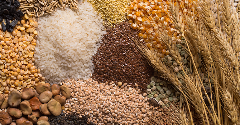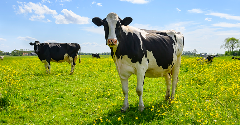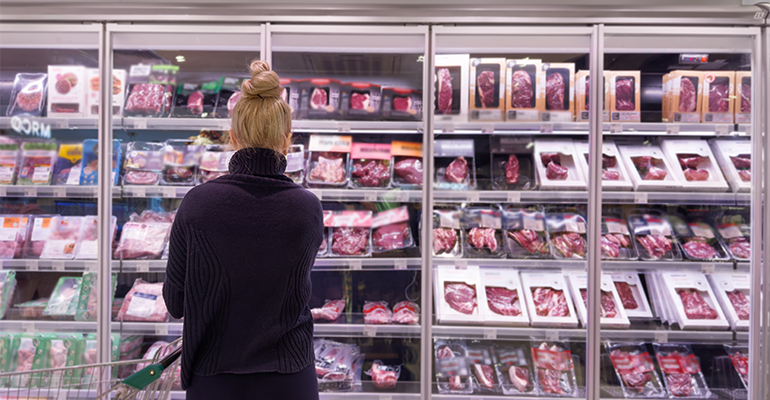News
Bakers Under Fire Once More in Wholegrain Controversy
1 Oct 2013Two publications have been causing a stir this year in the bakery world for suggesting – and by no means for the first time – that manufacturers are misusing “wholegrain” and similar descriptions on products which often contain a pitifully small quantity of whole grains and/or too much sugar. Not all is healthy that is […]

Two publications have been causing a stir this year in the bakery world for suggesting – and by no means for the first time – that manufacturers are misusing “wholegrain” and similar descriptions on products which often contain a pitifully small quantity of whole grains and/or too much sugar.
Not all is healthy that is wholegrain
The first of these papers came in the shape of a study in which 545 bakery products purchased at two different grocery retail chains were analysed by researchers from the highly prestigious Harvard University. The study was published in Public Health Nutrition in January 2013.
The Harvard investigators lamented the fact that there was no consistent regulation as to what actually defined a wholegrain product, never mind what could be marketed as such. One of the key conclusions reached by the researchers was that for those grain-based products which did not sport an FDA-approved health claim, the inconsistent nature of labelling of wholegrain content made it difficult for consumers to identify those products that were inherently healthy.
For instance, the authors were concerned that the industry-backed Whole Grains Council’s WG Stamp, used on around 7,500 products in a number of countries, was potentially misleading consumers by implying healthfulness despite some of these products’ considerable sugar content.
The high sugar issue has repeatedly been flung into the face of bakery companies, and breakfast cereal manufacturers make for a particularly popular target. Foodwatch, a German consumer advocacy organisation, severely lambasted Nestlé once again last summer for the fact that a number of its children’s breakfast cereals, marketed as containing 8g of whole grains per portion, contained up to 25% sugar by weight.
Not enough wholemeal flour, too many additives
The second high-profile publication pouring scorn on bakery manufacturers’ wholegrain marketing this year so far was a report published on 27 February 2013 by the Real Bread Campaign in the UK, entitled A Wholegrain of Truth.
The report’s primary criticism was aimed at the fact that many industrially produced bread loaves marketed as containing ‘wholegrain’ turned out to have fairly little wholegrain content. For instance, Kingsmill Oatilicious (Associated British Foods) contained 19% malted wholemeal flour and 2% whole oat flakes, while Waitrose White & Wholegrain private label bread only mustered a wholegrain content of 6%.
In an interview following the publication of the report, the Real Bread Campaign’s co-ordinator was quoted as taking issue with the fact that even just one teaspoon of wholegrain flour added to a loaf mix would, in theory, qualify the end product to be labelled “wholegrain” just because it contained the ingredient.
Hence, the report’s authors were calling for more government legislation to review the use of the terms ‘wholegrain’, ‘wheatgrain’, ‘whole’ and ‘goodness’.
Criticism was also doled out over the fact that many loaves labelled “wholemeal”, which, by UK law, can only contain flour that is 100% wholegrain, listed soya flour and wheat gluten powder as added ingredients. Although this is not illegal because these additives are not technically flour, the investigators nevertheless considered this practice to be a “dilution” of a product, which, in their opinion, should consist of nothing but whole wheat flour, water, yeast and salt.
Consumer acceptance issue remains
Predictably, when these publications hit the spotlight, they caused a fair amount of ruckus. A number of industry bodies, such as the UK’s Federation of Bakers, mounted a number of convincing counter-arguments to defend some of the industry’s commonly employed formulation and marketing practices.
Bakers are, undeniably, stuck between a rock and a hard place. They would surely like to sell more products that are close to 100% wholemeal, but consumer enthusiasm for dense-textured bread, particularly in markets where such bakery products are not part of local baking tradition, tends to be limited.
Our statistics show that the Netherlands, Belgium, Denmark, Norway and Finland rank highest in terms of per capita NH high fibre bread retail volume sales. The Netherlands mustered 26.5kg per capita in 2012, and Finland 14.7kg. The US, France, Spain and Italy, where fluffy white bread rules, managed around 3kg.
Consumers know by now that whole grains are healthier than refined ones, but actually getting them to eat products made exclusively from wholemeal flour is quite another matter. It is both understandable and commendable that bakers are experimenting with the amounts and mixtures that are most successful at garnering sufficient consumer acceptance to result in viable mass-market products.
Let’s make it at least 50% wholegrain
However, it does seem somewhat disingenuous to market a product as wholegrain if only a negligible percentage of the flour is actually wholegrain, even if the exact percentage is stated on the ingredients label.
Front-of-pack statements akin to ‘made with whole grains’ are in the same league as ‘all natural’, ie they are essentially meaningless as no legally binding definition exists, and manufacturers which choose to use them will have to be prepared to face perpetual scrutiny and fend off criticism.
Rather than waiting for legislation to level the playing field, it is advisable to be proactive and raise the bar by striving for a sensible, industry-wide solution. The US Department of Agriculture’s official My Plate healthy eating recommendations for consumers state that “at least half of all the grains eaten should be whole grains”. Therefore, it would make sense to apply terms like “wholegrain” to products which consist of at least 50% wholegrain flour.
The Real Bread Campaign’s call to ban ingredients like wheat gluten and soya flour from wholemeal products is unrealistic to say the least. The practice of adding such innocuous ingredients in order to achieve a product with a palatable texture is hardly a threat to any baker’s reputation. Excessive sugar content, on the other hand, especially in ‘wholegrain’ breakfast cereals, will remain a major sticking point.
Related news

Sustainable grains present a healthy growth opportunity
3 Oct 2024
Food insights provider SPINS unveils the latest trends in the sustainable grains field, exploring how seven leading grains show healthy growth despite challenges in the global value chain.
Read more
Will we see a wave of NPD that focuses on insulin management?
1 Oct 2024
As a new study finds protein and fats can help manage insulin, food manufacturers are building on emerging GLP-1 platforms and supporting nutritional guidance.
Read more
New environmental food scoring standards emerge
30 Sep 2024
EIT Food and Foundation Earth collaborate to launch environmental food scoring for products entering the global supply chain.
Read more
Africa progresses with food transformation strategy
19 Sep 2024
Large-scale efforts are underway to drastically change the African food sector with a $61 billion (€55 bn) set of proposed transformation plans to be implemented across forty countries. Yet there are concerns that this initiative severely jeopardises s...
Read more
European Commission releases new supply chain recommendations
6 Sep 2024
The European Union’s (EU) legislative arm publishes its latest guidance on protecting the market’s food supply chain against current and future crises.
Read more
Tesco trials methane mitigation supplement for dairy cattle
5 Sep 2024
Tesco is trialing a methane-reducing feed supplement for one of its key UK dairy farms, sustainable UK milk producer Grosvenor Farms.
Read more
European consumers want more freedom to choose biotech-based food
3 Sep 2024
Survey findings point to growing levels of interest in cultivated meat as European consumers say they want the freedom to choose the lab-based products.
Read more
Will ‘foie gras’ become the EU’s first approved cultivated meat?
20 Aug 2024
French startup Gourmey has submitted its cultivated foie gras for approval in the European Union (EU), signalling the first application of its kind in the region.
Read more
Europe gravitates to African spices
19 Aug 2024
Shipping delays, limited production output and climate change impact Europe’s spice supply, creating opportunities for African brands to enter the captive market.
Read more
Paris Olympics: Food and beverage brands champion health, fun, and sustainability
5 Aug 2024
Food and beverage brands are aligning with the Paris Olympics 2024 Food Vision, which emphasises sustainability, local sourcing, and plant-based diets.
Read more